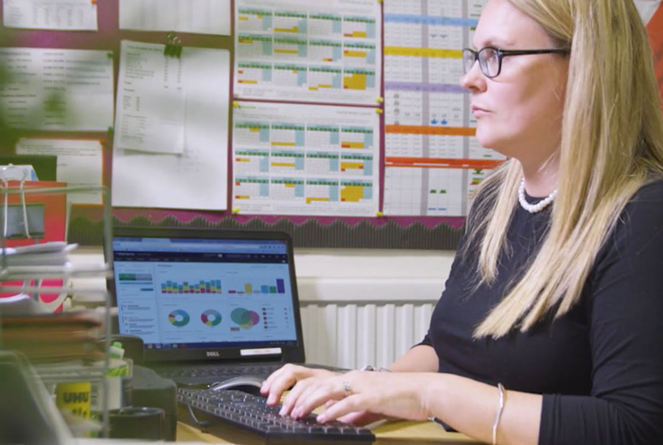Introduction
Safeguarding in schools is an essential responsibility that ensures the well-being and safety of all pupils. It encompasses policies, practices, and the commitment to protect children from harm and abuse. Safeguarding accountability holds educational institutions responsible for maintaining a secure environment, and in this blog, we will explore the crucial intersection between safeguarding and the bystander effect. Understanding how the bystander effect impacts school safeguarding practices is essential for generating a culture of intervention and support.
The significance of safeguarding accountability
Safeguarding accountability in schools involves several key aspects:
Policy implementation: Schools are responsible for implementing and enforcing safeguarding policies that aim to protect pupils from harm. These policies include procedures for reporting, intervention, and prevention.
Compliance with regulations: Schools must adhere to government laws and regulations related to safeguarding, ensuring that they meet legal requirements and standards.
Transparency and reporting: Schools must maintain transparency by providing information about their safeguarding efforts to stakeholders, including parents, pupils, and authorities.
Creating a safe environment: The primary goal of safeguarding accountability is to create and maintain a safe environment for children, encompassing physical safety and emotional well-being.
The bystander effect and its relevance
The bystander effect is a psychological phenomenon in which individuals are less likely to intervene in a potentially harmful or risky situation when others are present. This effect can be particularly relevant in the context of safeguarding within schools.
Why the bystander effect matters in schools
Preventing harm: The bystander effect can deter individuals from intervening in situations of bullying, harassment, or other forms of abuse. Overcoming this effect is crucial to prevent harm to those who may be vulnerable.
Early intervention: Bystanders are often the first to notice signs of abuse or misconduct. Encouraging them to report and intervene early can help address issues before they escalate.
Creating a supportive culture: Promoting a culture where bystanders feel empowered to act encourages an environment in which pupils look out for one another. This reinforces the idea that everyone has a role in ensuring safety.
Reducing tolerance for misconduct: When bystanders actively challenge harmful behaviours, it sends a strong message that misconduct is unacceptable within the school community, reducing tolerance for abusive actions.
Enhancing reporting rates: Encouraging bystanders to report concerns increases the likelihood of identifying cases that might otherwise go unreported, leading to timely interventions and support for victims.
Educating and empowering pupils
Addressing the bystander effect involves educating pupils about their role in creating a safe and supportive school environment. It also gives them the tools to intervene responsibly, empowering them to make a positive difference.
Key strategies for combating the bystander effect
Education: In the realm of education, schools can integrate bystander and safeguarding training within their curricula, equipping staff with insights into the consequences of their actions and empowering them with effective intervention techniques. Additionally, a comprehensive RSHE (Relationships, Sex, and Health Education) curriculum can be pivotal in educating pupils about the bystander effect and nurturing their abilities to promote and sustain healthy relationships.
Empowerment: Encourage all staff (other than the Designated Safeguarding Leads and Deputies) to take an active role in safeguarding by providing them with a platform to voice their concerns and contribute to the school's safeguarding efforts.
Conclusion
Safeguarding accountability in schools is vital for ensuring the safety and well-being of all pupils. It involves the implementation of policies, compliance with regulations, transparency, and creating a secure environment. Understanding and addressing the bystander effect is equally critical, as it can impact the effectiveness of safeguarding practices. By educating and empowering teachers and school staff and promoting a culture of intervention and support, schools can enhance their safeguarding efforts and provide a safe and nurturing environment for all.
Addressing the Growing Concern of Safeguarding in Schools
We recognise that, more than ever, safeguarding in schools is a pressing concern.
Let us help your school create a secure environment through our comprehensive safeguarding training course. Equip your staff with the knowledge and tools they need to protect the most vulnerable members of your school community.
Explore our latest training programmes to learn how Juniper's expert training can make a real difference in your school's safeguarding efforts.
Together, we can build a safer tomorrow for your pupils.


/Primary%20school%20.jpg?width=2000&name=Primary%20school%20.jpg)








.png?width=940&height=788&name=Lingfield%20College%20Case%20Study%20(5).png)
-1.png?width=1000&height=833&name=National%20Association%20of%20Head%20Teachers%20(3)-1.png)
-3.png?width=1080&height=1080&name=Untitled%20design%20(10)-3.png)





